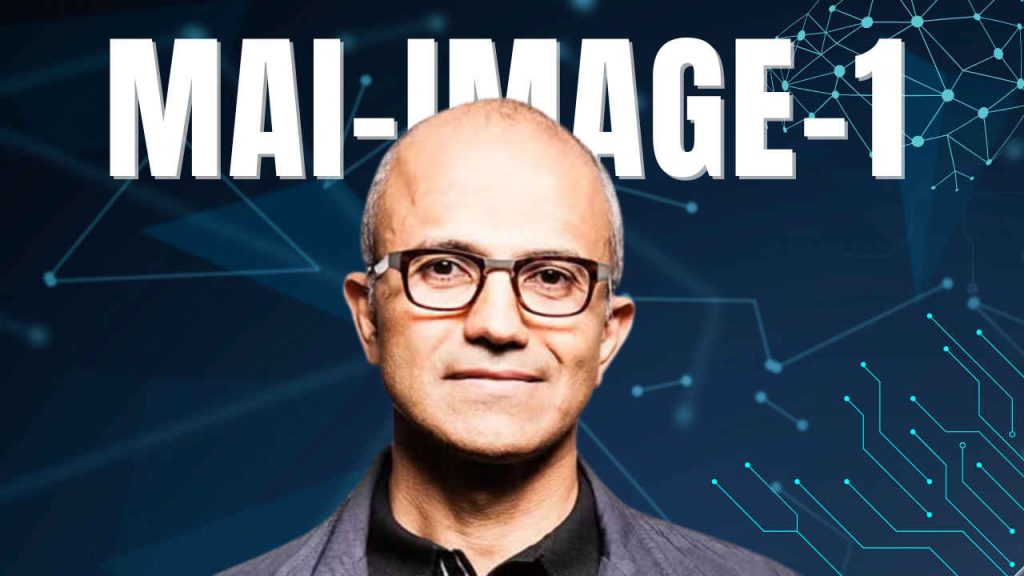In a major step toward AI self-reliance, Microsoft has unveiled MAI-Image-1, its first in-house text-to-image generation model. The move signals a new phase in Microsoft’s artificial intelligence ambitions, one where the company no longer just integrates tools like OpenAI’s DALL·E or Stability AI’s models, but builds creative AI systems of its own from the ground up.

 Survey
Survey✅ Thank you for completing the survey!
For years, Microsoft has been known as a major investor and infrastructure provider for OpenAI, the creator of ChatGPT. Those partnerships helped Microsoft infuse generative AI across its ecosystem – from Copilot in Word and PowerPoint to image tools inside Bing.
Also read: Microsoft announces MAI-Image-1, its first in-house image generation model
But MAI-Image-1 marks a clear pivot: the tech giant is moving from being a platform for AI to being a producer of core AI technology.
According to The Verge, the new model is part of Microsoft’s “MAI” lineup, a family of generative systems that also includes MAI-Voice-1 for speech synthesis and MAI-1, a conversational model currently in testing. MAI-Image-1 is the first visual foundation model built entirely by Microsoft’s internal AI division.


Smaller, faster, sharper
Microsoft claims MAI-Image-1 produces photorealistic, detailed images while maintaining lower latency than larger, more computationally expensive systems. Early benchmarks have already placed it in the top 10 on LMArena, a human-evaluation platform where users compare image outputs from different AI models.
The model was reportedly trained with feedback from creative professionals – artists, designers, and photographers – in an attempt to overcome a common flaw in AI image systems: their tendency to generate repetitive, over-styled results.
Microsoft says this collaboration helped refine texture rendering, lighting accuracy, and stylistic diversity, resulting in visuals that “look less AI-generated and more naturally composed.”
A statement of independence
This release also reflects Microsoft’s growing desire to reduce dependency on partners like OpenAI. While the two companies remain deeply linked through shared technology and infrastructure, MAI-Image-1 allows Microsoft to own the full image generation pipeline, from research and development to deployment and product integration.
Also read: Intel unveils Panther Lake: First AI PC chip built on 18A node
It’s a move similar to what Google and Meta have done with their Gemini and Emu models respectively: building internal capabilities to control innovation, cost, and content safety at scale.
Where it fits in Microsoft’s ecosystem
MAI-Image-1 is expected to appear across Microsoft’s suite of products. It could soon power Copilot’s image generation, enhance PowerPoint design suggestions, enable realistic visual previews in Microsoft Designer, and offer enterprise-grade image tools in Azure AI Studio.
By integrating MAI-Image-1 natively, Microsoft can deliver faster response times and tighter security, crucial for corporate and government users who prefer AI models trained under stricter data compliance rules.
Safety, ethics, and the creative question
Microsoft says it’s committed to “safe and responsible outcomes,” though independent reviewers haven’t yet tested the model’s guardrails, the filters that prevent generation of harmful, explicit, or copyrighted material.
This balance between creative freedom and ethical control remains one of AI’s hardest challenges. If MAI-Image-1’s safety systems work as intended, it could set a new bar for responsible visual AI in enterprise and consumer applications alike.
With MAI-Image-1, Microsoft joins an increasingly crowded field of companies racing to define the next generation of visual AI. OpenAI’s DALL·E 3, Midjourney’s iterative updates, and Stability AI’s open-source diffusion models have each set high expectations for quality, style, and accessibility.
Microsoft’s advantage lies in integration and trust, if MAI-Image-1 can match competitors in creativity while offering smoother integration across its global software ecosystem, it could reshape how billions of users visualize ideas.
In essence, MAI-Image-1 isn’t just another image generator, it’s Microsoft’s declaration of creative independence in the AI era. By bringing generative image technology in-house, the company isn’t just keeping pace with the AI revolution – it’s preparing to define its own version of it.
Also read: xAI is building AI models for gaming and robotics: Here’s what we know

